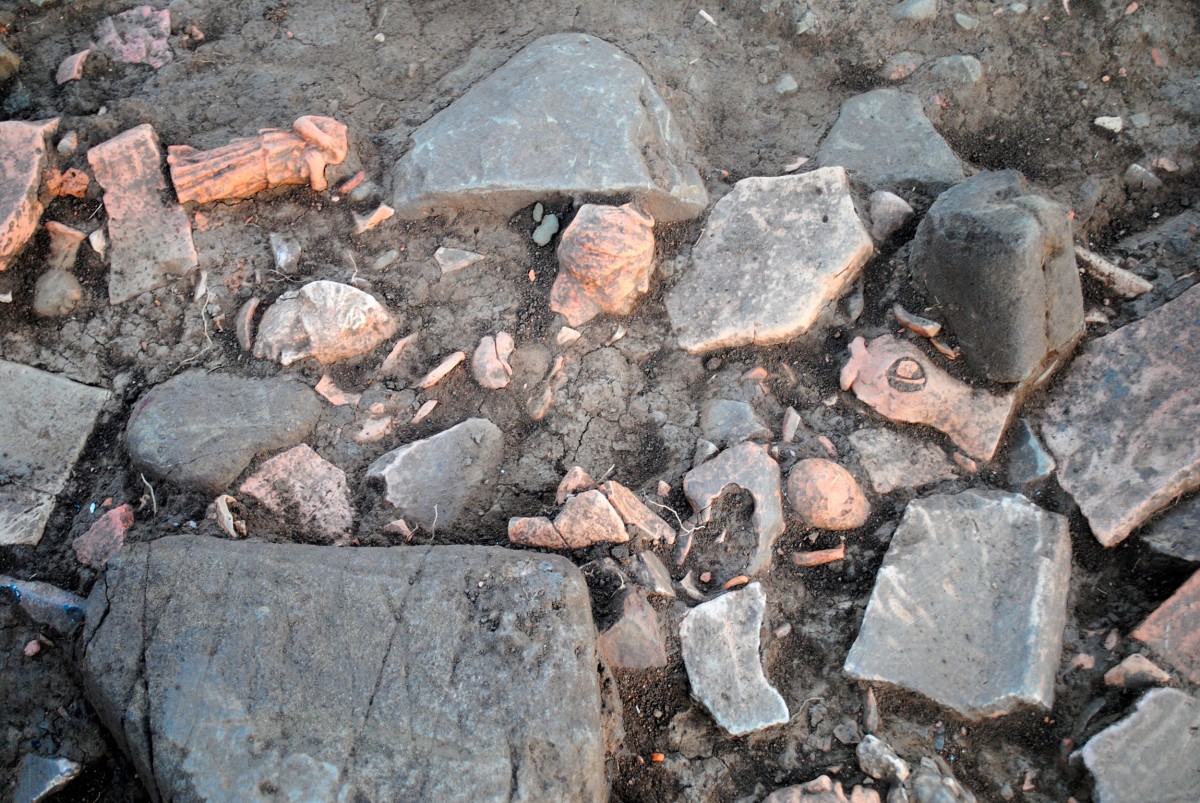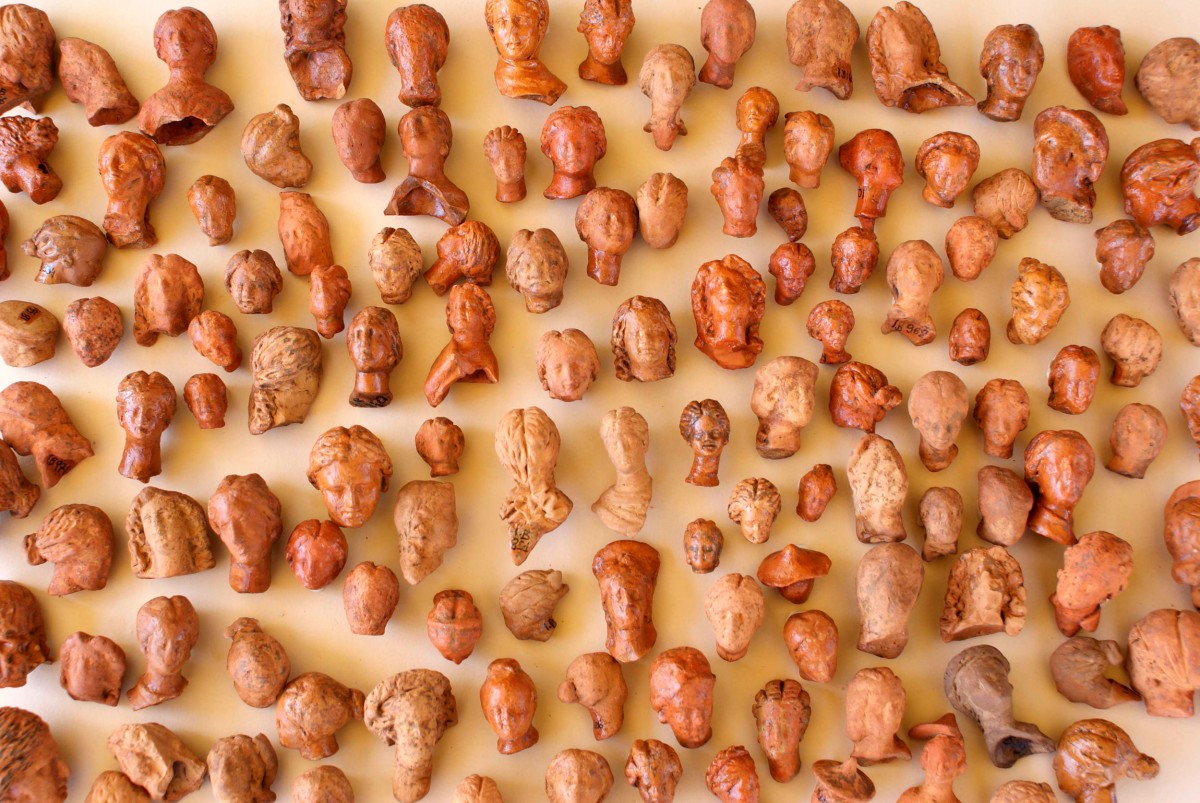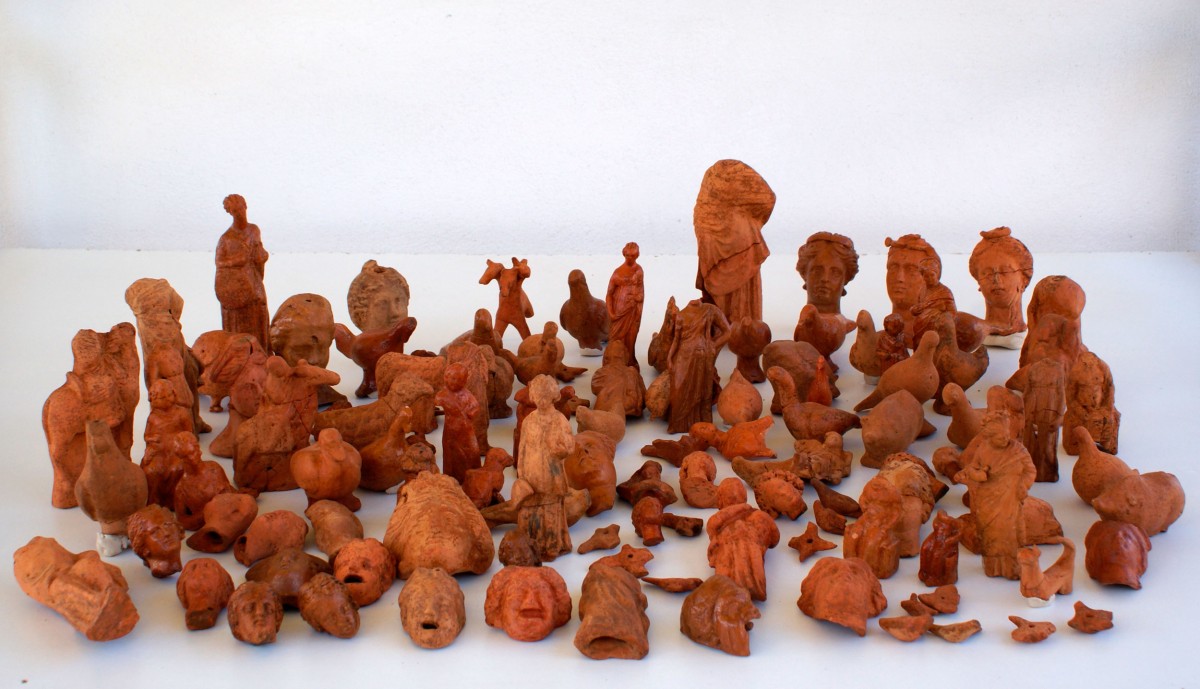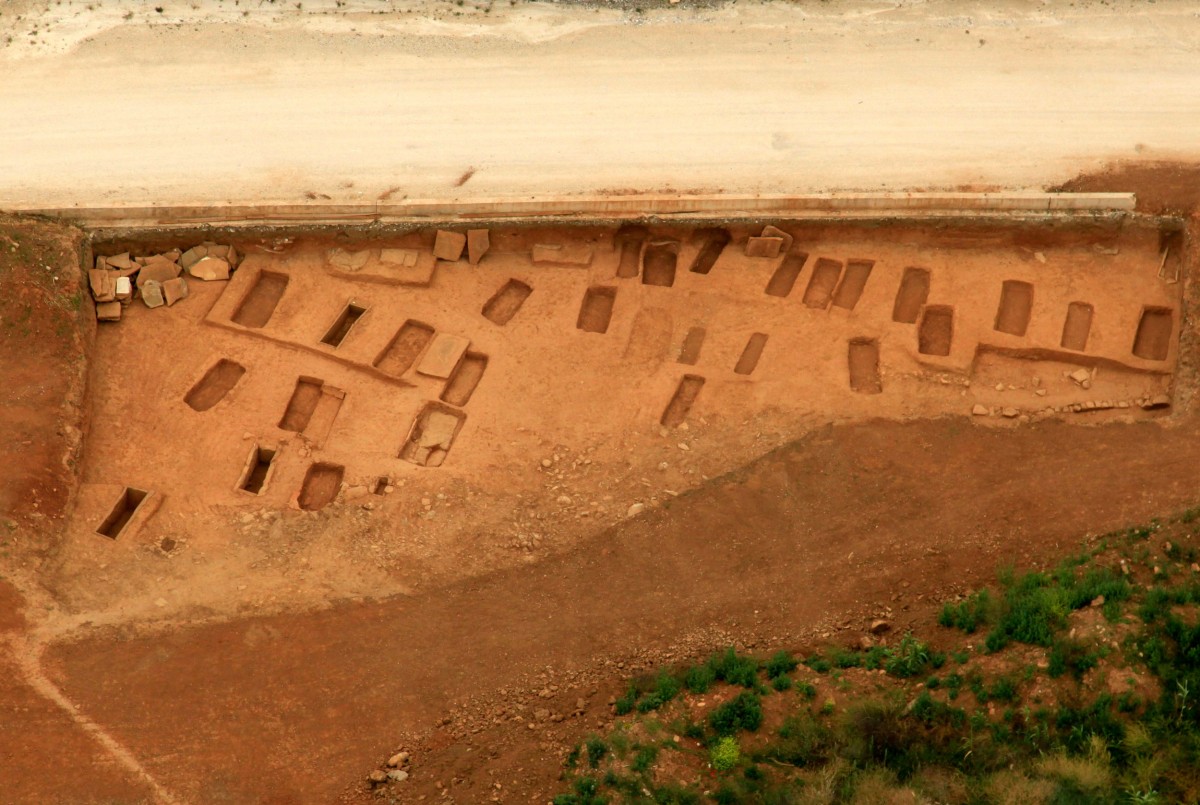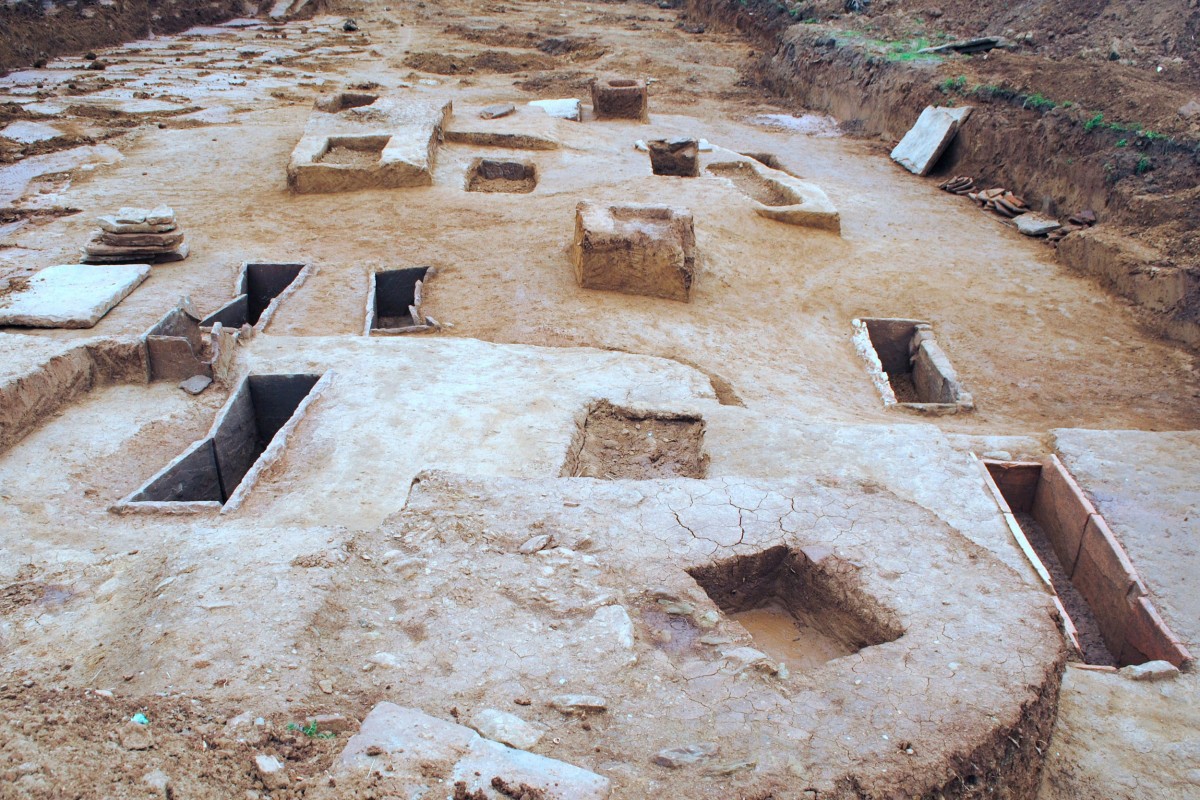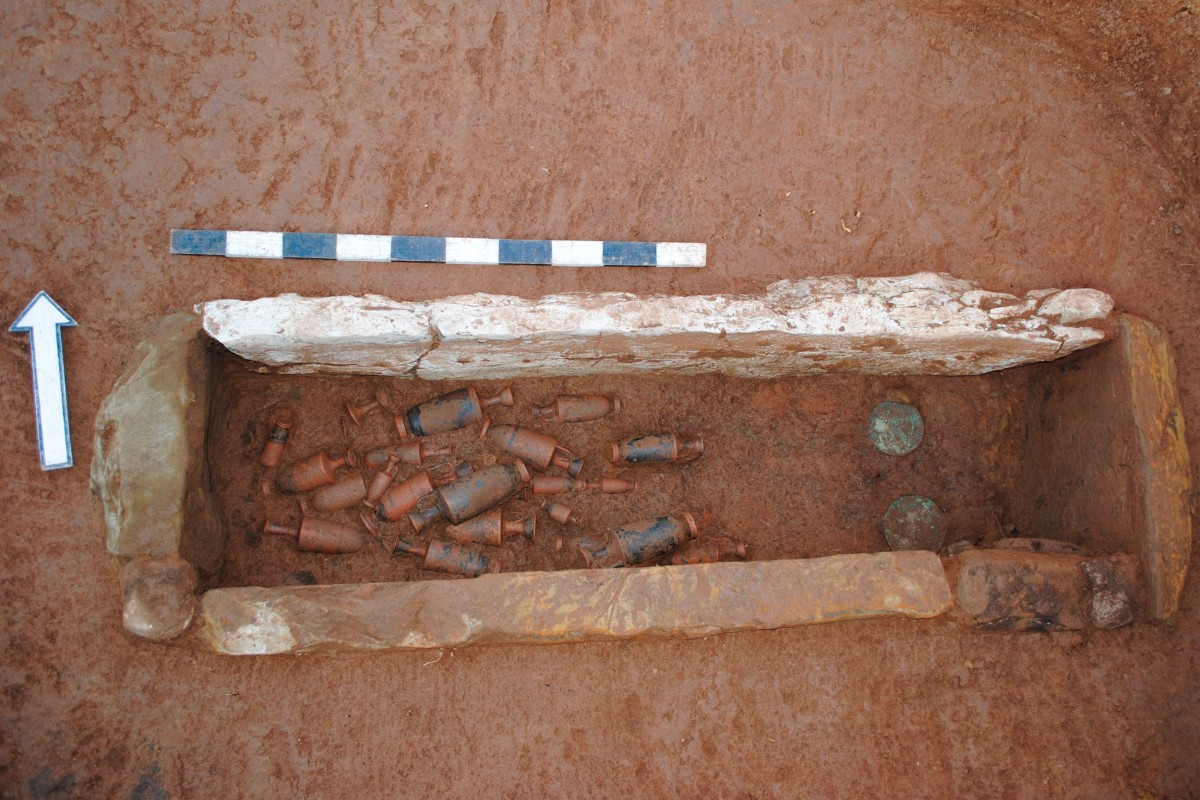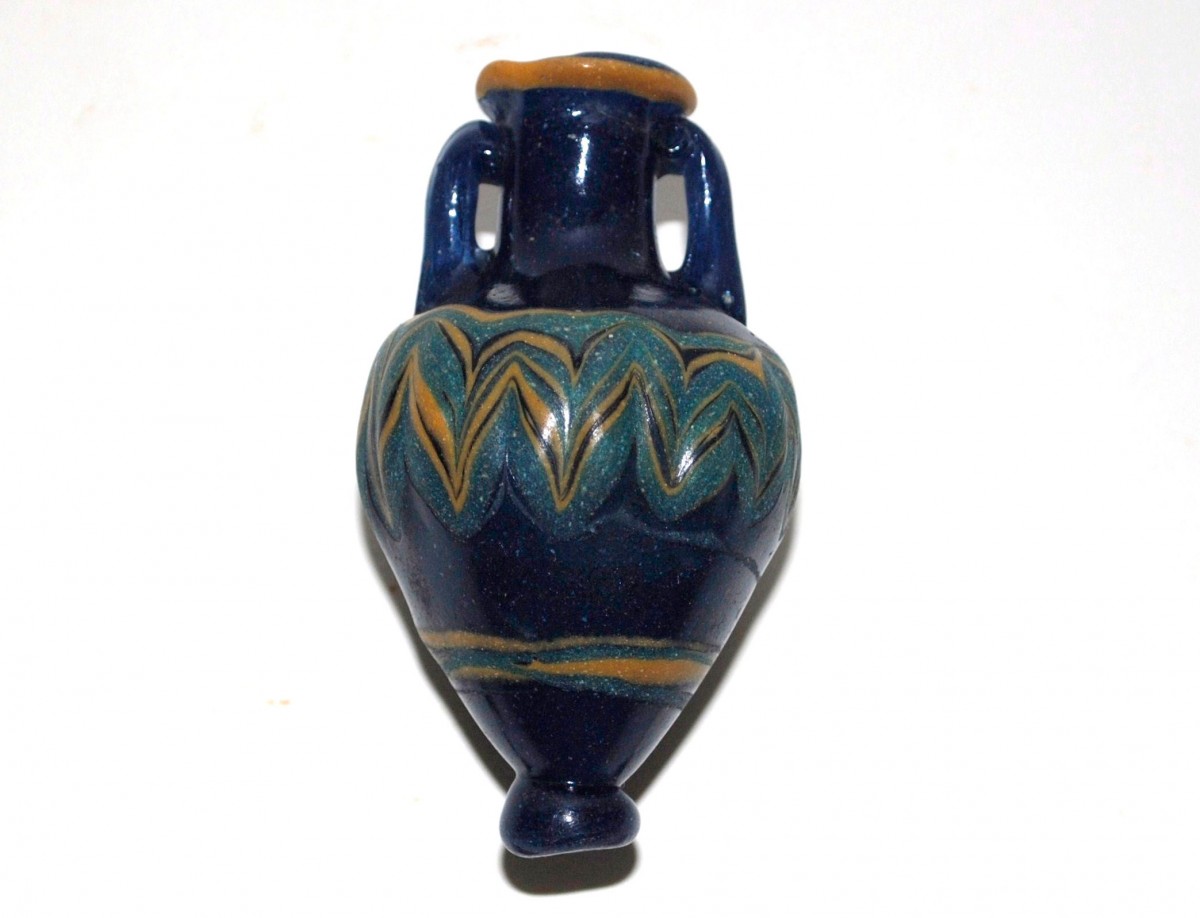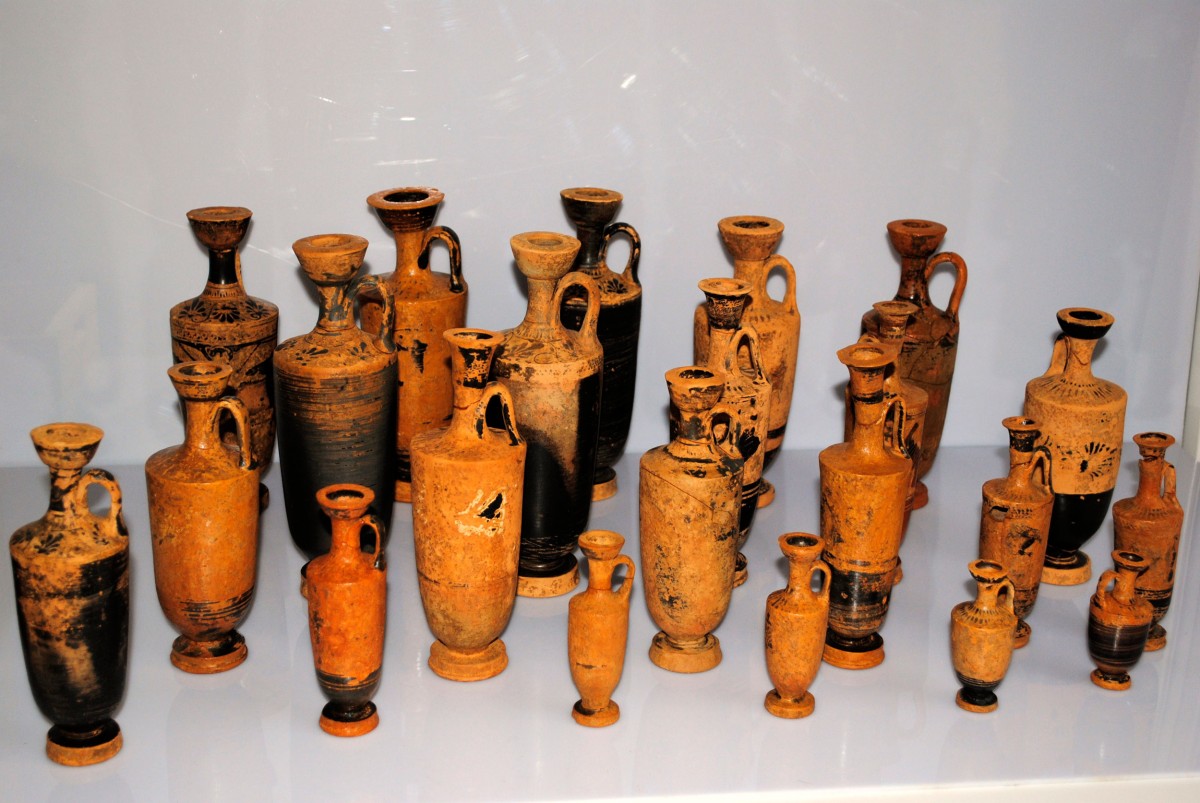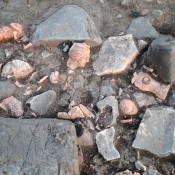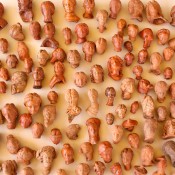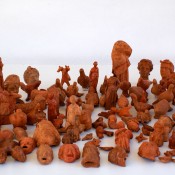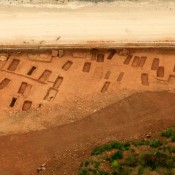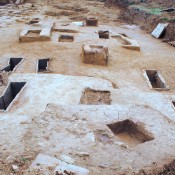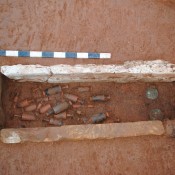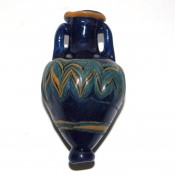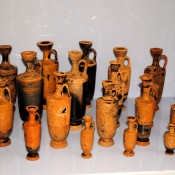The Aetolian city of Alikyrna is known from ancient sources where it is mentioned by name, however there is no epigraphic evidence confirming its identification with some specific archaeological site. Strabo calls it a kome (large village) and places it after Pleuron, at a distance 30 stadia from inland Kalydon, thus informing us that it lied on the coast (note 1). According to Pliny it was an inland site, like Pleuron, it was situated inland (H.M. IV, 3). Based on these sources, most scholars place Alikyrna on the hill known as “Chilia Spitia” (a Thousand Houses), near the modern village of Ag. Thomas by Mesolonghi , where the ruins of a fortification, enclosing an area of approximately 5 acres, are preserved (note 2). The site lies between Pleuron and Kalydon (note 3), on one of the last hills of mount Arakynthos, rising up upon the coastal plain of Aitolia and the lagoon of Mesolonghi. Foundations of a large building and a retaining wall to its NW can be seen inside the fortified area (note 4).
The site was already inhabited since the Proto-Geometric Period, as is confirmed by a cist grave of the 8th c BC which was discovered by chance on the eastern slope of the hill (note 5). During Hellenistic times the city extended down to the plain, where are visible foundations of building (note 6), while it seems that a separate fortification wall protected the main city (note 7). A drainage channel 17 metres long found on the western slopes of the hill is of special importance, since it is obviously part of a public work (note 8).
Remains of the Hellenistic settlement have, so far, been investigated in two only in two locations. Remnants of a pottery kiln were investigated in the Metochi locality (note 9), while scarce finds belonging possibly to a house came to light in a short distance to the south of the fortified hill (note 10).
Archaeological evidence reaches as far as the present highway leading from Antirrio to Ioannina and the Aghios Ioannis modern settlement, where trial excavations uncovered remains of buildings dated to the Hellenistic period (note 11). According to S. Alexandropoulou the area of Aghios Ioannis should be identified to ancient Elaos (note 12), a fortified site cited only by Polybios (IV.65.6), when he describes Philip V’s campaign in 219 BC from the ancient city of Oiniades to Southern Aetolia, an opinion discredited however by M. Petropoulos (note 13).
Evidence of the city’s cemeteries is provided by a cluster of early Hellenistic tombs dated the second half of the 4th c BC, which were found on the hill’s southern slope (note 14), along with a chamber tomb of the “Macedonian Type” dated to the first half of the 3rd c BC (note 15).
The city prospers during the Roman period and acquires an impressive bath complex (thermai) built in the 2nd c AD, probably during the construction of Trajan’s Way which linked Patras to Nikopolis and passed through the complex’s Northern side( note 16). The baths were destroyed by the powerful earthquake of 551 AD which hit Aetoloakarnania and all of the NW Peloponnese (note 17).
Over the last few years the conducting of rescue excavations during the construction of the Ionia Motorway has constantly enriched archaeological data by shedding light on the history of the area, but also by often raising new questions.
These excavations are carried out very close to Alikyrna, as the new road crosses the S and SW slopes of the fortified hill. This is an extensive plateau that starts from the SW foot of the hill and ends further west as a natural retaining wall which creates a boundary for today’s eastern bank of the stream of St Simeon. On this bank, near the riverbed, a deposit was discovered, measuring 6×7 metres from which thousands of fragments of pottery vases and figurines were collected (fig.1). The deposit was demarcated on one side by two parallel walls. The amount of findings is impressive: over 15,000 fragments of figurines and shards of vases whose preservation and study are still in preliminary stage. The majority of this material dates to the Hellenistic period. The largest group consists of clay figurines, very few of which have survived intact. On the whole, individual heads (fig. 2) and body parts have been preserved. Female figures are predominant, namely the usual types to be found in sanctuaries dedicated to female deities. They wear everyday clothes along with a variety of simple or more elaborate hairdos fashionable during the Hellenistic period, of which the knidian (note 18) appeared to be the prevalent style. Often they hold some sort of offering, fruits or a bird, tightly against their waist. Very few of them are seated at some bench or desk, while there are figures seated on animals, usually on a bird. There are some figures recognizable as Nikai, while a great number of figurines depict young girls. Among the seated figures are a few examples of schoolgirls at their desk with a slate, as well as infant girls holding bunches of grapes (note 19). Quite a few figures can be interpreted as connected to rituals, such as the hydriaphoroi, the thymiateria with floral finial and the dancers among which are some cylindrical compact figures follow an archaic Corinthian type (note 20). There are quite a few figurines of animals such as pigs, bulls, rams, and horses as well as birds, usually doves or roosters. Finally there is a group of masks depicting Satyrs and actors of the New Comedy as well as a few figurines of Erotes probably belonging to larger complexes (fig. 3).
Some of these figurines types can be interpreted as belonging to the circles of great goddess Artemis, who was worshipped in Aetoloakarnania both in city sanctuaries such as that of the Laphrion in Kalydon and in smaller rural sanctuaries, as well as of Aphrodite and Dionysus who was also venerated in neighbouring Kalydon. The identification of figurines related to the circle of Demeter and Kore is of special interest, as shown both by the figurine of the three headed Cerberus and by a fragment with stylized nodules which can be associated with the kotiliske, the vessel used for worship in the Eleusinian Mysteries (note 21). Moreover one of the very few male figurine holding a torch and branches could be identified as an initiate. The location of the deposit at a short distance from the ancient city is significant of its topography. The consolidation of the research begun on the plateau before the bank of the stream hopefully will determine the origin of this abundant material.
Although no deities have been recognized in any of the figurines, we hope to get answers on the deities venerated through research started on the plateau before the bank of the stream and just 50 metres from the deposit. So far, an extensive complex of at least three buildings has been discovered, made up of many rooms with open space around them.
The Necropolis at the “Rigaiika” locality in Mesolonghi
The finding of an extensive cemetery of the Classical and Hellenistic period in the area known as “Rigaiika” in Mesolonghi, between Alikyrna and Kalydon during the construction of the Ionia Motorway, offers fresh data on ancient Alikyrna, despite the initial queries as to the identity the city to which the large cemetery belonged (note 22). Its orientation is E/SE by W/NW and develops on an axis measuring approximately 1 kilometre where the trail of an ancient road can be traced. Despite no consistent remains having been found, the cemetery’s layout suggests that an ancient road crossed under the new one, linking the two Aetolian cities of Kalydon and Alikyrna (note 23). It is a section of the most important ancient road which started from Epirus and reached the coasts of Aetolia via Akarnania. The road crossed this part of the cemetery, while some of its paved parts are preserved in other localities (note 24).
The cemetery at “Rigaiika” locality (fig. 4), which was unknown till the start of work on the Ionia road, is the largest organized one of its kind found up to now in Aetolia. To date 323 graves have been investigated. They are organized in clusters and are primarily cist graves or pit graves, while two “Macedonian” type tombs stand out, one of which was inside funerary enclosures along with other, simpler cist graves.
Excavations started in 2009 and are ongoing. Between 2009 and 2010 243 graves were discovered (note 25). During 2011, excavations were conducted by the undersigned in two more clusters, unearthing 80 graves and reaching a total of 323 while investigations are still ongoing. The first cluster containing 22 graves (graves 253 to 274) is located about 200 m south of the known ones and extends to c. 200 sq.m. There are 11 cist graves and 11 pit graves (fig. 5).
The second cluster is made up of 41 graves and takes up a space of 30x25m. Mainly pit graves were discovered as well as 8 cist graves and one tile grave. Fifteen more have been recently investigated to the south.
In general the graves were found close to the soil’s surface at a depth ranging from 0,10m to 0,50m, but they were constructed at different depths, that is in two to three levels, the bottom one reaching a depth of 2,50m from the surface. Pit graves and cist graves are the most usual grave types, whereas rather rarely occur tombs of Macedonian type (note26). As a rule they contained a single burial of an adult, but there were also graves of children or infants most of which can be found on a higher level covering on some occasions the ones in a deeper layer. In most graves the skeletons have been quite well preserved with their heights varying from 0,50m in the case of children, to 1,75m. In some graves traces of fire on or near the burials were noted. The finding of iron nails in quite a few graves points to the use of either a coffin or some other similar construction.
The majority of the graves contain rich offerings (fig. 6) such as pottery and metal artefacts of exceptional quality, revealing the prosperity of the society from which they originated. Several, however, had no offerings. The rich contents of the cemetery are the following: Approximately four hundred pottery vases (lekythoi, pyxis, skyphoi, saltcellars, cups, lamps, kantharoi, plates, feeders, small glass amphoras, unguentaria, hydriai, thymiateria (fig. 8) (note 28), several clay figurines depicting animals, satyrs and humans, bronze jewellery and accessories for dress or toilet objects such as mirrors, pins, fibulae, necklaces as well as scrapers, and silver “Charon’s obols”. The vases are mainly small, either for everyday use or exclusively burials. Quite a few were unpainted such as oil lamps, skyphoi, one-handled cups, unguentaria, kantharoi), but several had brown and black glazing both on inside and outside surfaces. Many lekythoi were also found, both Eleian (note 29) and red-figured (note 30).
The placing of the offerings in relation to the deceased was not strictly determined. Nevertheless we can observe some preferences, such as placing them close to the shoulders and the head, near the legs mainly at thigh level or near the toes, between the legs, and in some cases in the palm of the deceased’s hand. The figurines were used mainly for child burials and are located left and right of the deceased’s body, while knucklebones were found in several children’s graves. The few coins originating from burials were placed in the deceased’s mouth. Jewellery was found in places corresponding to their use.
The new data that has come to light from excavations in the region of Alikyrna as well as the completion of their study, an undertaking both hard and time consuming ,will shed light on the history of this unknown Aetolian town (kome). Despite being referred to by scant sources as “small” compared to the grand old cities of Kalydon and Pleuron, it is gradually revealing a rich past (note 31).
Dr Olympia Vikatou
Archaeologist,
Head of the 36th Ephorate of Prehistoric and Classical Antiquities.
